#corn market
Text
Mexico Corn Market: Tradition, Innovation, and Sustainable Growth
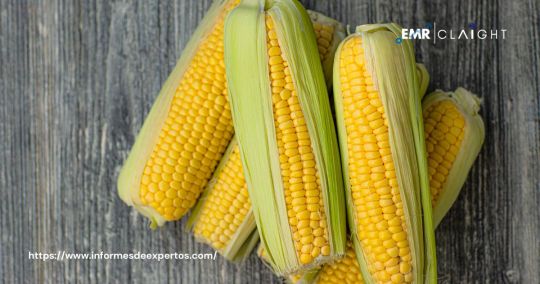
The Mexico Corn Market encompasses the cultivation, production, trade, and consumption of corn (maize) within Mexico, a country with a deep-rooted cultural and economic connection to this staple crop. This article provides an overview of the Mexico Corn Market, covering its historical significance, production dynamics, consumption patterns, trade relationships, and key challenges.
Historical Significance
Corn holds profound cultural, nutritional, and economic significance in Mexico, dating back thousands of years to pre-Columbian civilizations such as the Aztecs, Maya, and Olmecs. Known as "elote" in its fresh form and "maíz" in its dried form, corn has been a dietary staple and symbol of sustenance, fertility, and identity for indigenous communities across Mexico. Its cultivation and consumption played a central role in the development of Mesoamerican civilizations and continue to shape Mexican cuisine, traditions, and agricultural practices to this day.
Production Dynamics
Mexico is among the world's largest producers of corn, with a diverse range of varieties cultivated across different regions and climatic zones. The country's corn production is characterized by a mix of smallholder farmers, commercial enterprises, and agribusiness corporations, each contributing to the overall supply chain. Major corn-producing states in Mexico include Sinaloa, Jalisco, Chiapas, and Oaxaca, with varying levels of mechanization, irrigation, and agroecological practices employed depending on local conditions.
Consumption Patterns
Corn is a dietary staple in Mexico, consumed in various forms such as tortillas, tamales, pozole, and atole, among others. Tortillas, in particular, are a ubiquitous element of Mexican cuisine, serving as the foundation for countless dishes and meals. Corn-based snacks, beverages, and processed foods are also popular among Mexican consumers, reflecting the versatility and cultural importance of this grain in everyday life.
Trade Relationships
Mexico's corn market is influenced by both domestic production and international trade dynamics. While the country is largely self-sufficient in corn production, it also imports significant quantities of yellow corn, primarily for use as animal feed and in industrial processes such as ethanol production. The United States is the primary supplier of imported corn to Mexico, owing to geographical proximity, trade agreements such as the North American Free Trade Agreement (NAFTA), and market integration between the two countries.
Key Challenges
The Mexico Corn Market faces several challenges that impact production, trade, and food security:
Climate Change: Variability in weather patterns, including droughts, floods, and extreme temperatures, poses risks to corn cultivation in Mexico, affecting yields, crop quality, and farmer livelihoods. Climate change mitigation and adaptation strategies are needed to enhance resilience and sustainability in the face of environmental challenges.
Genetically Modified Organisms (GMOs): The introduction of genetically modified corn varieties has sparked debate and controversy in Mexico, where traditional landraces and biodiversity are valued. Concerns about genetic contamination, loss of indigenous knowledge, and corporate control of seeds have led to calls for stricter regulations and protection of Mexico's corn heritage.
Market Concentration: Consolidation within the agribusiness sector, including seed companies, agrochemical suppliers, and grain traders, can limit market access and bargaining power for smallholder farmers, exacerbating inequalities in the Mexico Corn Market. Policies to promote fair competition, support rural livelihoods, and empower farmers are essential for fostering a more inclusive and equitable agricultural sector.
Food Sovereignty: Ensuring food sovereignty, defined as the right of peoples to control their own food systems, is a critical issue in Mexico, where corn is deeply intertwined with cultural identity and national sovereignty. Safeguarding traditional farming practices, promoting agroecology, and empowering local communities to protect and manage their seeds are fundamental to preserving Mexico's corn heritage and achieving food security for all.
Sustainability Initiatives
Amidst growing concerns about environmental degradation, biodiversity loss, and climate change, sustainability initiatives are gaining momentum within the Mexico Corn Market. Agroecological practices, such as conservation agriculture, organic farming, and crop diversification, are promoted to enhance soil health, conserve water resources, and reduce reliance on agrochemical inputs. Agroforestry systems, incorporating trees and shrubs into corn fields, contribute to ecosystem resilience, carbon sequestration, and biodiversity conservation. Moreover, certification schemes such as organic and fair trade certifications provide market incentives for sustainable corn production and support farmers in accessing premium markets.
Innovation and Research
Research and innovation play crucial roles in driving productivity gains, resilience, and competitiveness within the Mexico Corn Market. Public and private sector investments in agricultural research, breeding programs, and biotechnology aim to develop improved corn varieties with traits such as drought tolerance, disease resistance, and nutritional quality. Collaborative research initiatives between universities, research institutions, and industry partners focus on addressing specific challenges facing Mexican farmers, such as pests and diseases, soil degradation, and climate variability. Furthermore, extension services, farmer field schools, and technology transfer programs facilitate the adoption of best practices and innovative technologies among smallholder farmers, empowering them to enhance productivity and livelihoods.
Market Access and Distribution
Access to markets and distribution channels is critical for farmers to sell their corn produce and generate income. In Mexico, corn is marketed through various channels, including traditional markets, cooperatives, agribusinesses, and government procurement programs. Infrastructure investments in roads, transportation, and storage facilities are essential for facilitating the efficient movement of corn from rural production areas to urban centers and export terminals. Moreover, efforts to strengthen market linkages, improve market information systems, and enhance value chain coordination contribute to market efficiency, price transparency, and income opportunities for farmers.
0 notes
Text
Market Prices are Still Higher, But How long?
Market Prices are Still Higher, But How long?
Market Prices are still higher, but for how long? Commodity markets are rarely dull and sometimes are outright wild. One-quarter of the way into 2022, and we’ve seen a lot of upward pressure in several commodities. The curious question is how long is this going to last given multiple outside factors that could bring the higher push to a halt.
Mike Zuzolo is the founder and president of Global…

View On WordPress
#black rhinos#commodities#Commodity Markets#corn market#crude oil#Demand#diesel fuel#E15#energy#Exports#heating oil#hedges#High Path Avian Influenza#Hogs and Pigs Report#Market Prices#markets#NATO#planting delays#prices#Russia#soybeans#summer#Supply#Trade#Ukraine#USDA#vegetable oil
0 notes
Note
My MC the first Halloween after coming back because she's still mad at Milo:

I have nothing to add to this except for I love how oddly specific this gif is to the situation. LOL!
57 notes
·
View notes
Note
How accurate is popping as a method of telling a snake's gender? I hear a lot of stories about a hatchling getting checked that way only for the owner to later figure out their corn snake was instead a male/female. Have you ever had that happen to you?
I have, in both directions, but only one time with a snake I personally sexed. Overall I think popping is a fairly reliable, fast, and safe method of sexing. The only other option for babies is DNA testing but that option costs $20+ per snake so I won't do that unless somebody asks and is willing to pay for it.
The trouble with popping is that it tells us only one thing: that a snake does or does not have a hemipene-shaped structure. While we kinda assumed that female snakes have hemiclitori, it was only recently confirmed that the teensy cone-shaped structures everted while popping a female are actually analogous to a clitoris.
It follows that snake genitalia, like mammal genitalia, may be very small in certain males or very large in certain females, and individuals may have characteristics of both. The Steinhart Aquarium recently lost their anaconda to old age and on necropsy discovered that they were intersex! This is probably a lot less uncommon in reptiles than we realize.
Another issue with popping as a means of sexing a snake is that it is easy to do... But also easy to do wrong. Too light a touch and a snake won't "pop" hemipenes. Too rough and you can bruise or permanently injure a snake. I've seen broken tails and kinked spines caused by overzealous sex-checks. I tend to err on the side of gentleness. I check at least twice, a few weeks apart, before listing for sale, and if I don't see penes either time I assume the snake is a girl. One instance of hemipenes labels the snake as a boy and I stop checking.
I've had a couple of boy snakes turn out to be girls, but they're snakes that I bought from other breeders and didn't immediately check for myself so I can't say how they were sexed.
One buyer of a snake I produced reached out after a year to let me know that their little girl was actually a little boy. It's possible that the hemipenes were too small to identify as a baby, or maybe the snake was really clenching hard when I checked, or maybe they really were a girl all along with enlarged hemiclitori as they got older. I'll never know! I offered the buyer a chance to return the snake and they didn't respond so I assume they were happy regardless.
These things happen rarely, but they do happen and sometimes it's a hassle. Any breeder worth their salt has contingencies for their contingencies, though, and a mis-sexed snake is an inconvenience at worst. In every case where it's happened to me, it's been serendipity!
One must be able to roll with the tides if one intends to wade into the unpredictable waters of snake breeding.
#answers to questions#text post#long post#snake#snakes#reptile#reptiles#reptiblr#corn snake#corn snakes#seriously we need fewer breeders#the market is saturated with low-quality and mystery-morph snakes#just because they will breed doesn't mean they should
44 notes
·
View notes
Text
they don’t know i know so much about corn
#guy taking a food security class ^#learned a lot about corn and the corn industry and mexicos corn market
21 notes
·
View notes
Text
I could never live in a cornless society tbh
#no corn maze. no corn MAIZE. no corn dog no corn bread. no corn on cob.#no candy corn (this counts) no stealing corn from side of the road from hardworking farmers. no creepy corn husk dolls at farmers market.#thats no way to live.
27 notes
·
View notes
Text
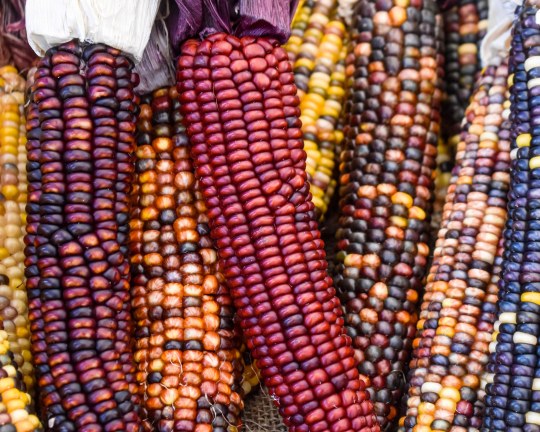
Children of the corn © 2023 by Kevin Nance
18 notes
·
View notes
Text



Idk if thisll reach anyone but i’ve been editing pics for this small business and id appreciate it if anyone took a look at it on instagram! @amimonobyayami
https://instagram.com/amimonobyayami?igshid=MzRlODBiNWFlZA==
They’ve been launching cute halloween themed items, but their other creations are pretty nifty! Show them some love if you have time to spare please🫶🙏
#halloween#spooky#cute#crochet#knitting#ghost#pumpkin#autumn#please#small business#keychain#charm#supportmeplease#my edit#marketing#white#purple#candy corn#candy#smallbusinessowner#editor#September#adding tags is so easy wth#tell them infantgecko sent you#actually maybe dont#my blog is very smut but i swear im real😭#share#business#yarn#crafting
6 notes
·
View notes
Text
30 Farmer's Market Fruits and Veggies Patterns
Two Birds One Stone Farm – Kenny and Sarah
Here in Nova Scotia, especially in the Annapolis Valley where we live, the farmer’s markets are the place to be. Within a few minutes of our home, there are 6 permanent locations where we can score mostly locally grown produce and some of them import out-of-season fruits and veggies as well.
Noggin’s Corner Farm Market – Fall festival set up with annual…

View On WordPress
#Acorn#Apples#Carrot#Corn#Crochet Blanket#dishcloth#Egg Plant#Farmer&039;s Market#Fruit#Grapes#Hot Pad#Leaf#Leaves#Nova Scotia#Nova Scotia Tourism#Plants#Radish#Table Settings#Vegetables#wolfville
9 notes
·
View notes
Text
The Corn Market: Dynamics, Influencing Factors, and Future Outlook

The Corn Market has witnessed substantial growth, reaching a remarkable volume and demand of 1,170.55 million tons in 2022. With a projected compound annual growth rate (CAGR) of 1.1% during the forecast period of 2023-2028, the corn market continues to display promising potential. This growth can be attributed to several factors, including population growth, changing dietary preferences, expanding livestock industries, and the increasing demand for biofuels. As one of the most widely cultivated and versatile cereal grains, corn plays a crucial role in meeting the food, feed, and industrial needs of a rapidly evolving global economy.
Get a Free Sample Report: Corn Market Report Sample 2023-2028
Introduction to the Corn Market
Definition and importance of corn:
Corn, also known as maize, is a cereal grain widely cultivated and consumed around the world. It is a staple crop in many countries and plays a vital role in food security and agricultural economies. Corn is versatile and used for various purposes, including human consumption, livestock feed, ethanol production, and industrial applications.
Overview of the global corn market:
The global corn market encompasses the production, trade, and consumption of corn on a global scale. It involves various stakeholders, including farmers, traders, processors, and end-users. The market is influenced by factors such as supply and demand dynamics, weather conditions, government policies, and international trade patterns.
Significance of the corn market in agriculture and various industries:
The corn market holds significant importance in agriculture and various industries due to its wide range of applications. In agriculture, corn serves as a source of income for farmers and contributes to rural development. It also supports the livestock industry as a primary feed ingredient. Additionally, corn plays a crucial role in the production of ethanol, a renewable biofuel, and serves as a raw material for food, beverage, and industrial manufacturing sectors.
Factors Influencing the Corn Market
Supply factors:
Global corn production and acreage:
The level of corn production and the total acreage dedicated to corn cultivation impact the overall supply in the market. Factors affecting production include agricultural practices, technological advancements, availability of land, and shifts in crop rotation patterns.
Weather conditions and natural disasters:
Weather events such as droughts, floods, heatwaves, and hurricanes can significantly affect corn crops. Adverse weather conditions can lead to reduced yields, crop damage, and supply disruptions, resulting in price fluctuations.
Technological advancements in farming practices:
Innovations in agricultural technology, such as improved seeds, precision farming techniques, and mechanization, can increase productivity and yield potential. These advancements influence the overall supply of corn by enabling farmers to optimize production and mitigate risks.
Demand factors:
Population growth and changing dietary preferences:
The growing global population and changing dietary preferences, particularly in emerging economies, impact the demand for corn as a food staple. Increasing urbanization, income levels, and a shift towards more processed foods contribute to the rising demand for corn and its derived products.
Feed and livestock industry demand:
The livestock sector is a major consumer of corn, utilizing it as a primary feed ingredient. The demand for meat and animal products, influenced by factors such as population growth, income levels, and dietary trends, directly impacts the demand for corn.
Ethanol production and biofuel policies:
Government policies promoting biofuels, such as ethanol, have a significant impact on corn demand. The use of corn for ethanol production is influenced by energy policies, environmental concerns, and the availability of alternative feedstocks. Biofuel mandates and subsidies can drive increased corn demand for ethanol production.
International trade and export/import dynamics:
The corn market is influenced by global trade patterns and policies. Importing and exporting countries, trade agreements, tariffs, and transportation costs play a crucial role in shaping the demand and supply dynamics of the corn market.
Price Determinants and Fluctuations
Market fundamentals:
Supply-demand balance:
The interaction between corn supply and demand establishes the fundamental basis for price determination. If supply exceeds demand, prices tend to decline, while a supply shortage relative to demand can lead to price increases.
Inventory levels and carryover stocks:
The levels of corn inventories, including carryover stocks from previous seasons, impact price stability and market expectations. Sufficient stocks can buffer supply shocks and mitigate price volatility, while low inventories or stockpiling can lead to price spikes.
Speculation and financial market influences:
Commodity futures trading:
Speculators, including hedge funds and other financial investors, engage in trading corn futures contracts. Their activity can influence short-term price movements, as they take positions based on their expectations of future market conditions.
Role of hedge funds and institutional investors:
Large institutional investors and hedge funds can impact the corn market through their investment strategies and market participation. Their trading decisions and allocation of capital can contribute to price fluctuations, particularly in futures and derivative markets.
Government policies and subsidies:
Agricultural subsidies and support programs:
Government policies, including subsidies, direct payments, and crop insurance programs, can affect corn production and prices. Subsidies provide financial incentives to farmers, influencing planting decisions and overall market supply.
Trade policies and tariffs:
Import and export policies, including tariffs and trade restrictions, imposed by governments can impact corn prices. Trade barriers can limit access to markets and influence supply-demand dynamics.
Major Corn-producing countries:
United States:
The United States is the largest producer and exporter of corn globally. Its corn market is influenced by factors such as weather conditions, government support programs, technological advancements, and domestic and international demand.
Brazil:
Brazil is a significant player in the corn market, with expanding production and increasing exports. The country's corn market is driven by factors such as favorable climatic conditions, agricultural expansion, and its position as a major global supplier.
China:
China is both a major producer and consumer of corn. The country's corn market is influenced by government policies, including stockpiling programs and feed industry demand.
Argentina:
Argentina is a significant corn producer and exporter, with its market influenced by factors such as weather conditions, government policies, and export competitiveness.
Major Key Players of Corn Industry:
Archer Daniels Midland Company (ADM):
ADM is a global agricultural processor and food ingredient provider. It is one of the largest players in the corn market, involved in the production, processing, and distribution of corn and its derivatives. ADM operates a vast network of processing facilities and transportation infrastructure, allowing them to efficiently handle corn sourcing, processing, and distribution on a global scale. They offer a wide range of corn-based products, including corn oil, starches, sweeteners, and ethanol. ADM's expertise in agricultural commodities, extensive supply chain capabilities, and strong market presence make them a key player in the global corn market.
Cargill, Incorporated:
Cargill is a multinational corporation involved in the trading, processing, and distribution of agricultural commodities, including corn. With a strong global presence, Cargill plays a significant role in the corn market through its sourcing, processing, and marketing activities. The company operates corn processing plants and offers a range of corn-based products for food, animal feed, and industrial applications. Cargill's expertise in risk management, supply chain management, and innovation positions them as a major player in the global corn market.
Bunge Limited:
Bunge is a leading global agribusiness and food company involved in the production, processing, and distribution of corn and other agricultural commodities. In the corn market, Bunge engages in sourcing, trading, and processing corn into various products, including animal feed, food ingredients, and ethanol. The company operates a vast network of processing facilities, storage terminals, and transportation infrastructure, enabling them to efficiently serve customers worldwide. Bunge's strong presence in key corn-producing regions and their expertise in commodity trading and processing make them a key player in the global corn market.
Syngenta AG:
Syngenta is a global agriculture company that specializes in seeds, crop protection products, and agricultural technologies. While not primarily focused on corn production, Syngenta plays a vital role in the corn market through its development and sale of corn seeds and traits. The company invests in research and development to improve corn varieties, enhance yield potential, and provide solutions for pest and disease management. Syngenta's innovation in corn genetics and biotechnology contributes to the advancement and productivity of the corn industry globally.
Corteva Agriscience:
Corteva Agriscience is a leading global agricultural company that focuses on providing innovative solutions for farmers. As a key player in the corn market, Corteva offers a wide range of corn seeds, traits, and crop protection products. The company invests in research and development to develop high-performing corn hybrids that help farmers maximize yield potential and address challenges such as pests, diseases, and environmental conditions. Corteva's commitment to sustainable agriculture and their expertise in seed genetics and crop protection technologies position them as a significant contributor to the global corn market.
0 notes
Text





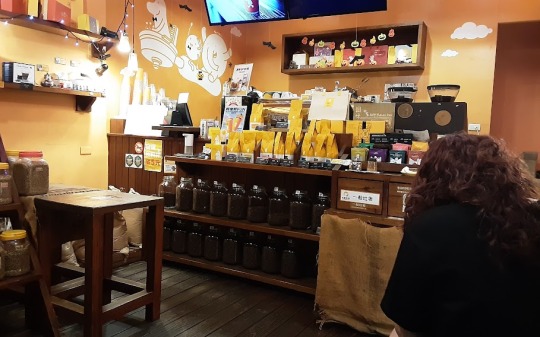



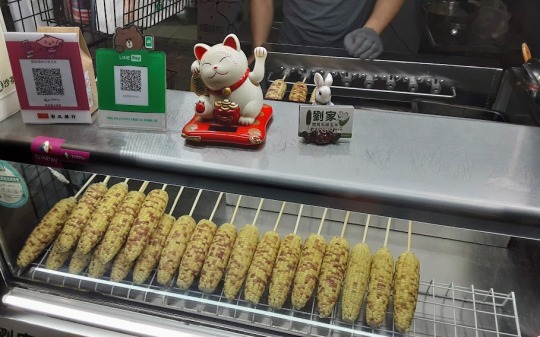
I was buying street-food with Grilled Corn and Taiwanese Lettuce Mixed all for my yummy dinner tonight at night market and also bought coffee which taste better one shop-Cama around my studio, they're on sale 25% last day of this autumn, and I quickly got one hot and another one ice coffee saved for tomorrow, because I love having Cama coffee but not cheap. It's okay, Eat good, laugh loud, sleep in a nice dreaming as someone fucking me tender & I moan very unrestrained (you know this is a veritable dream talking. lol) and doing what I love. That's life. ♫ ◠‿◠ Lan~*
#chu lan#taiwan artist city life#fine craft artist#leather art#grilled corn#taiwanese lettuce mixed#night market#street food#Cama coffee Taiwan#朱蘭皮藝#台灣工藝人#chu lan maria#life is short#eat live love#live in moment#活在當下
22 notes
·
View notes
Note
Milo: Anything. Absolutely anything. MC could come as a sexy crayon and he'd be on his knees crawling after them.
What if the MC dressed up as sexy corn 😂👀
Oh. Oh no. You may have found the one thing Milo would hate. LOL! Yup, that is the one costume Milo would look at and walk away from. And then that night have very confusing dreams about said corn.
89 notes
·
View notes
Text
Not to have first world problems but I resent that the only edible food I can find is like. Fish filets. Fucking expensive foods that I have to cook all fancy like
Normally I'm a "eat dry noodles and then drink hot water" kinda cook, so this is BOTH a momentous occasion AND something I get little extra enjoyment from. So I need to bitch about it.
If you ask me questions on this post, I will rip and tear at them and or you. To COPE
#city slickers do not interact#I don't want to hear JUST GO TO THE ASIAN FOOD STORE ever again#you guys think asian food stores grow on corn stalks?#however I practice gratitude for my friend in st paul who mails me stuff from the superior diverse markets their
38 notes
·
View notes
Photo
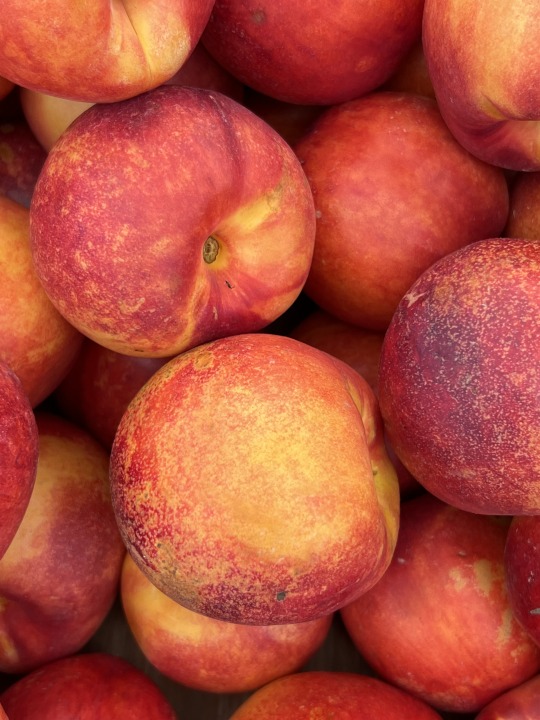

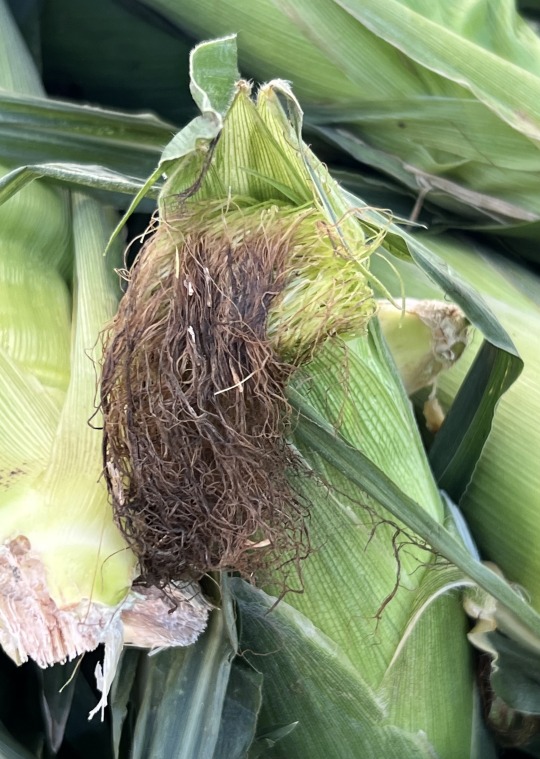
Late Summer Bounty, Fairfax City Farmers Market, 20 August 2022.
More fun with a new iPhone pro. Thus far I love it!
#fruits and vegetables#nectarines#tomatoes#corn (maize)#farmers market#fairfax city farmers market#virginia#2022#photographers on tumblr#iphone
28 notes
·
View notes
Text
that teenager at the farmers market was fulla beans i can so too pop the flint corn i bought today 99 cents a cob! although i barely dare to because it is simply so so pretty to look at
#currently it is sitting with a jar of dried beans and a couple of mini pumpkins (you gotta get some GOURDS) on my woodstove#which i am no longer using due to my uncle's concerns about insurance and Very Old Woodstoves . so it is now just like a sort of shelf#and/or display space . for my little harvest collection thing ive got going here#also i got a great recipe for corn soup from sweetgrass trading company website#which does compel me to want to go back to the farmers market and clean them out of corn while they still have it#i need a QUARt . of corn!! at least five more cobs
2 notes
·
View notes
Text

#ts3#mspoodle plays praaven#Heading to the market for snacks#I gotta sort out my recipes and food mods#I have ani's fridge mod#and one other food mod#but I don't quite understand all these individual food items that I have duplicates for#I wish they all worked together#like why do I need 2 versions of strawberries corn lettuce onions etc...#then I'm not sure if she even knows any recipes to cook anything lol#maybe she won't starve#and that roof has got to go#I need some cute proper thatched roofs
47 notes
·
View notes